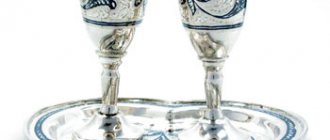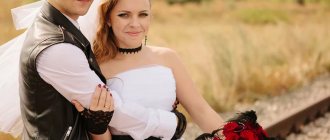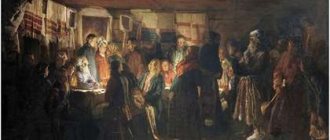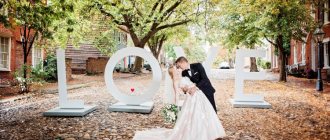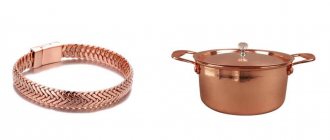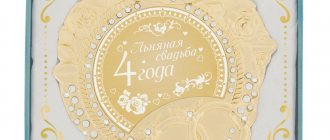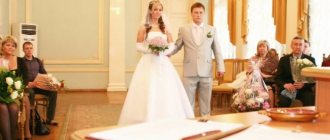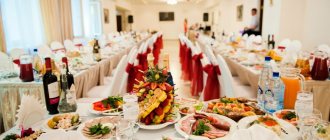Until the nineteenth century in England, decisions about marriage were made by the parents or guardians of young people. They also organized the wedding. Moreover, the bride and groom often did not even know each other at the moment when the decision was made about their marriage. Often the marriage agreement was concluded at a time when the future newlyweds were no more than seven years old. Children were even engaged between the ages of 3 and 7. In the future, the “spouses”, having reached a certain age, began to live together.
However, in the 17th century, a judge decided that marriages concluded between people, at least one of whom was under 7 years of age, were invalid. But if both were over 7 years old, then the children could become husband and wife - for this, the children just had to call each other husband and wife, hug and kiss. Of course, children continued to live with their parents until they became adults. But at the same time, the children were already married.
Often young people in love with each other, without receiving consent from their parents for marriage, ran away and got married secretly. It was a protest against parental despotism and lack of freedom in choosing a future spouse.
In 1653, a civil law was passed that required a civil marriage ceremony performed by a justice of the peace to make a marriage official. In this case, it was necessary to provide a certificate of public wedding from the parish church. If one of the newlyweds was under 21 years old, a certificate from their parents was needed. During the civil ceremony, the exchange of rings was prohibited.
Since 1753, only those marriages that were concluded in the Anglican Church, which has a special registration, began to be recognized as legal. Until 1990, it was possible to get married in a church only in the county where one of the future spouses lived. That is, it was impossible to get married secretly on someone else’s territory, because the marriage would be declared invalid.
Engagement in England
An English wedding, like almost any other, is preceded by a young man’s declaration of love and a proposal to marry. If the girl agrees, the couple is considered engaged.
Betrothal, or engagement - the time from the moment of acceptance of the proposal until the wedding - can last from two months to 5-6 years. As a sign that she is engaged, the girl wears the wedding ring presented by the groom until the wedding, when it is replaced with a wedding ring, or until the engagement is dissolved, which also sometimes happens.
The date of the appointed wedding is of great importance for the British. For example, they tried under no circumstances to schedule the wedding for May. Moreover, it was forbidden to plan a wedding during Lent. But Wednesday is traditionally considered the most preferred day for a wedding among the British.
Image of the bride and groom
It is better to choose a dress for a wedding, preferably white. It was the British who introduced this dress color into everyday use (to be specific, Queen Victoria). You can pay attention to the dress of the magnificent Kate Middleton, who recently became a member of the royal family. In an English wedding, it is important to attach a horseshoe to the dress; this will bring great luck. This is a very old tradition going back centuries, which was not ignored by Princess Diana, who married Prince Charles.
Blue is her indispensable attribute. In Foggy Albion this tradition is very loved and revered; there is even a specialized Order of the Garter, which has a very interesting and rich history.
A bouquet for the bride can be made from scarlet roses, which in turn are an integral symbol of England. For the groom, accessories with the symbols of the nation and a top hat, which was invented by the British, are suitable.
wedding ceremony
The pedantic British at all times strictly observed rituals and centuries-old traditions. Some of them have survived to this day, but with a more modern twist.
But still in England they prefer a church ceremony to a civil marriage, considering such a union sacred and therefore more durable. And to this day, church marriage is considered equal to civil marriage.
The British are sure that the more flowers are present during the ceremony, the happier the life of the newlyweds will be. Therefore, flowers are showered on both the passing wedding cortege and the road to the church.
The marriage procedure itself differs little from the American one. The bride is accompanied to the altar by the hand of her father or a close family member. Near the altar, the bride's hand is ceremonially handed over to the groom.
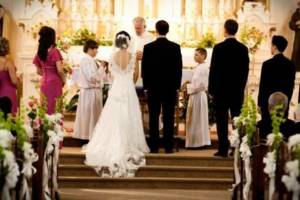
The priest conducting the ceremony asks those invited if anyone has any objections to this marriage, after which he blesses the newlyweds. The entire ceremony is carried out to the solemn sounds of the organ.
From time to time during the service, the church choir, all relatives and guests sing sacred hymns. The young people leave the church to the sound of Mendelssohn's march, performed on the organ.
Outfits for the bride and groom at an English wedding
Wedding traditions in England require brides, as a rule, to wear more formal attire than Russian ones. At least, seeing a ballgown with a crinoline and open shoulders at an English wedding is very rare.
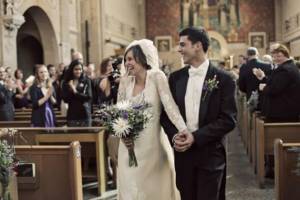
What a bride usually looks like in England:
- Something new, something taken, something blue and something old. Plus sixpence in the shoe. It is still believed that such a set can bring a girl good luck in marriage. The dress, of course, must be new. In general, wedding dresses are extremely rarely kept in English families. Taken, it can be a decoration for a while. They take it from a lucky married relative with children to attract good luck. The color blue is considered protection from evil spirits. Most often, the bride's underwear or garter is blue. The shoes that a girl wears to a wedding used to be old. But, of course, few people would want to wear worn-out shoes to a celebration, so shoes that were worn at least once before the holiday can be considered old (by the way, in Russia it is also considered a good omen if the bride wears her shoes before the wedding). And finally, sixpence for good luck in one of the shoes. The lucky coin in shoes has migrated into our customs.
- Traditionally, the dress does not remain in the family, but is sold or altered into a baptismal dress for the first child. English women prefer white outfits, without any colored elements.
- The bride's head is traditionally decorated with a long veil.
- An English wedding is a celebration with white gloves – for both the bride and the groom. But this custom, of course, is not always observed.
- In some counties in England it is still customary to give the bride a bracelet with two small horseshoes. It is believed that this will bring her happiness.
Image of an English groom:
- English guys also prefer not to deviate from the classics. A tailcoat and top hat in dark colors are the standard set for a newlywed. Although you can refuse the cylinder.
- According to tradition, English grooms are supposed to wear old shoes. However, modern youth are increasingly abandoning this custom.
Banquet in English
After the wedding ceremony, everyone goes to a banquet, or wedding breakfast. Guests at the feast are seated in pre-assigned individual seats, marked with signed signs. English weddings are characterized by the presence of a large amount of champagne.
The main dish is traditionally considered to be lamb with a side dish of stewed vegetables. Well, at no time, not a single wedding can do without a wedding cake. True, the wedding cake used to dominate in England; the cake is already a modern trend. Only the bride cuts it at the end of the feast.
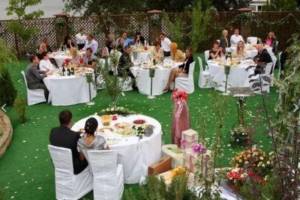
Features of the English wedding ceremony
You can register a marriage in England in special offices (something like our registry office), but most couples still prefer to follow traditions and customs, so they hold an English wedding in a church. Although, recently, outdoor ceremonies have also become popular, especially if the bride and groom want to organize a themed wedding, which is also not alien to conservative Englishmen.
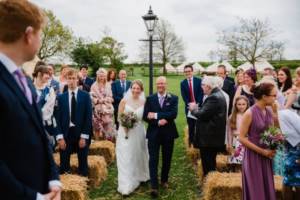
On the wedding day, the newlyweds are separated, because seeing the bride before the ceremony is a bad omen. The groom arrives first and waits for the bride at the altar. The bride arrives at the ceremony site and everything begins. During her procession to the altar, arm in arm with her father or other close male relative, live music is always played, and girls walk ahead and scatter rose petals so that her path to family life is prosperous. Not a single ceremony is complete without a touching reading of the vows of fidelity, which the newlyweds write for each other in advance.
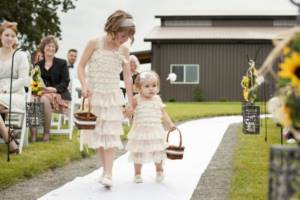
After the ceremony, the newlyweds are showered with colored rice and confetti for good luck. The newlyweds approach the car. Shoes may be tied to its bumper - this is a tribute to old traditions when newlyweds, when driving away, would throw an old shoe out of the window. And whoever catches it will be happy all year.
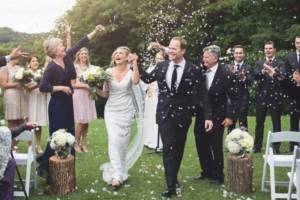
British wedding traditions
The first dance belongs to the newlyweds. It is also traditional for the bride to give one dance to her father while the groom dances with his mother.
Like the American bride, the English bride also throws a bouquet. But throwing a garter didn’t really catch on in prim England; it’s more American.
There is no specific ceremony for presenting gifts at an English wedding. The invitees can send them by mail in advance, or they can present them during the wedding, mainly after the feast.
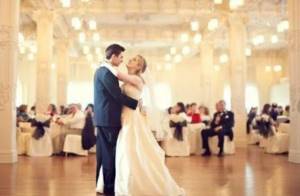
Increasingly, prudent young people make lists of necessary and desirable things in advance, which are passed on to all future guests, and they already choose from this registry what they can give.
The role of bridesmaids and groomsmen (best man)
The main bridesmaid was obliged to decorate the doors of the bride's house with white flowers on the planned wedding day.
In old England, there should have been at least six bridesmaids in an ideal situation. The style and color of their festive dresses were chosen by the bride, and the full cost of tailoring was paid by her venerable mother. On the planned wedding day, the main bridesmaid was obliged to decorate the doors of the bride's house with white flowers, and also carry a bouquet behind the bride throughout the ceremony, being a little away.
The best man, or groom's groomsman (as usual, brother or friend) also did not lag behind. He paid a fee to the church ministers, helped with the organization, and handed rings to the bride and groom on a pillow.
Wedding scenario
An obligatory element of an English wedding is holding a touching wedding in a church; in Russia this will most likely be a registry office. A train brings the newlyweds, as well as all participants, guests, parents and newlyweds of the wedding to the registry office. While the train is traveling to the registry office, along the way, specially hired and trained people will scatter fresh flowers and shoot guns into the air.
There is a belief that these sounds will scare away young evil spirits. As usual, the bride, led into the hall by the groom's father, will be preceded by a little girl who will sprinkle the path with fresh flowers. To the sounds of wonderful music, the newlyweds will swear allegiance to each other and then more fun events will begin.
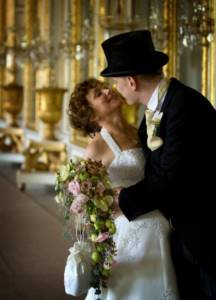
Before the wedding feast, business cards are placed on the tables with the names of the guests and small bags of sweets, expressing the newlyweds’ gratitude to the guests. The wedding feast menu is very diverse and varied. The leading place among wedding dishes is baked lamb, alcoholic drinks include champagne and wine, and dessert includes many different fruits.
Wedding cake is an essential part of a wedding banquet. The bride and groom cut it themselves and share it among the invited guests, but keep the top for themselves. The last piece is given according to the rules to the bachelor friends of the husband, so that he will soon start a family. Toasts are made at the wedding reception after the meal, and the first toast should be given by the groom's friend. Then everyone goes for a walk, after which fiery dances take place. That's all!
Our portal www.site advises you to carefully consider the style of the most important day for newlyweds. Don't shy away from ethnic weddings, they're fun, creative and interesting!
Who doesn't love to have fun at a good wedding party! Have you ever wondered where the modern Western wedding traditions that are rapidly penetrating the post-Soviet space came from? We decided to delve into historical chronicles and bring to your attention a fascinating excursion into the history of English weddings.
Wedding under license and bigamy without divorce
Although marriage in all its forms has existed since ancient times, the blessing of a marriage by a Christian priest was legalized in medieval England only in 1076, during the era of the Norman king William the Conqueror.
However, until the 16th century, the presence of a priest at a wedding was optional - a blessing was applied for separately. At the same time, the notorious marriage contracts began to be drawn up for the first time, where the bride and groom declared a dowry, property and rights.
In 1521, the first permissions, or wedding licenses, are mentioned - until that time, the English could marry completely freely, without asking permission. But in fact, until 1753, “legal” marriages, that is, under license, were concluded exclusively by representatives of the English aristocracy. For ordinary people, things went on as usual.
An example of severe pressure on citizens was the decree of 1690 introducing a wedding tax. This uncovered many illegal marriages and made it possible to streamline the collection of money for the wedding ceremony, levying fines for “unofficially sanctified” marriages. Of course, the decree caused a storm of indignation among the freedom-loving British.
There were no marriage certificates then, and until the 18th century, many married couples were not sure whether they were in a legal union. However, for thousands of ordinary people there was no difference if the question of inheritance did not arise.
It’s interesting that bigamy was common in medieval England, but no one thought about divorce.
